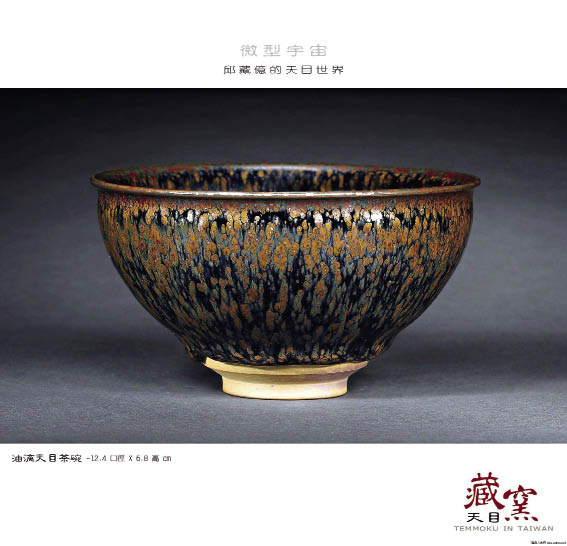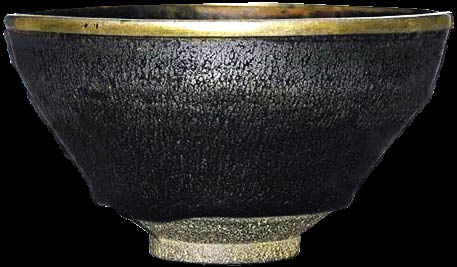

THE Jian kiln has an important role in the history of Chinese porcelain, and although not among the top five porcelain producers in the Song Dynasty (960-1279), one of its products – the Jian tea bowl – was given as a tribute to the Song royal family and therefore highly coveted.
Located in Jian’an, today’s Jian’ou City in northern Fujian Province, the Jian kiln evolved from a private operation in southern China that was launched in the 10th century, and remained in business through the Qing Dynasty (1644-1911). Its signature product is the black-glazed ware, which gained currency during the Song Dynasty, when tea drinking became popular among the upper class and tea competition was very fashionable.
Tea making at the time was much different from today. The Song people finely ground tea leaves and concocted them into a paste before adding hot water. When mixed with water a thick layer of froth was created and color and shape of the froth was a key criteria in the tea’s popularity. As the white froth stands out against a black background, the Jian bowl was favored by tea connoisseurs. Song Emperor Zhao Ji (1082-1135), a big tea lover, lauded the Jian bowl as the top choice among other porcelain tea cups, and personally designed a range of bowls which served to add momentum to its popularity. As a result, more kilns were built to make black-glazed wares.
The Jian bowl is highly valued because of its rarity. It is made of a clay rich in ferric oxide that has low malleability and refractoriness. To produce the desired glaze and pattern of the Jian bowl, it however must be fired at a temperature above 1300. The defect rate is therefore extraordinarily high. There is so far no solution to this problem, even with today’s modern technologies.

The Song method of tea making fell out of public favor after the Yuan Dynasty (1271-1368), but found a resurgence in neighboring Japan. Japanese monks studying in the Tianmu Mountain region (Zhejiang Province) introduced Chinese tea, tea wares, and tea making methods to their country in the Southern Song Dynasty (1127-1279). In the following centuries the Jian bowl was the centerpiece in Japanese tea ceremonies, and exerted lasting influence on Japanese and Korean ceramics. As it was brought from the Tianmu Mountain, it was called Temmoku in Japan.
The Jian bowl is distinctive for its kaleidoscope glaze transmutation pattern, which is the spontaneous result of firing combined with different techniques. The creation of a masterpiece Jian cup is hence, to some extent, a matter of luck. The most prized glaze patterns are hare’s fur, oil spot and Yaobian (meaning dazzling and brilliant transmutation).
The iron-rich glaze material of the Jian bowl crystallizes under high temperatures. In this process the ferric oxide builds up on the surface, and forms crystal spots, streaks or amorphous patterns of metallic luster as the temperature drops.
Partridge feather glaze is a mystery of Jian wares. The name comes from white mottles on black like those seen on the partridge bird’s chest. These bulging shiny spots also resemble pearls seemingly rolling in a pitch-dark bowl wall. There is no existing complete piece of partridge feather Jian ware, in China or Japan, and all attempts to reproduce it after the Song Dynasty have failed.
Artistically, the Jian bowl is a treasure of China, and is highly prized by connoisseurs. Functionally, it is a prime tea ware that retains the pure taste of the beverage.